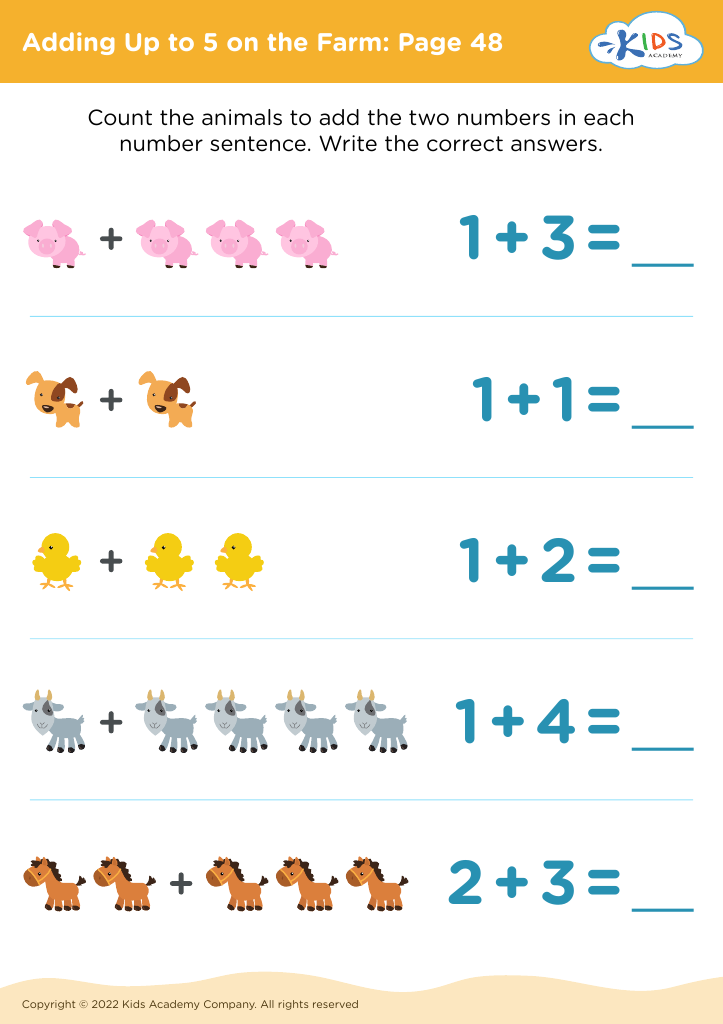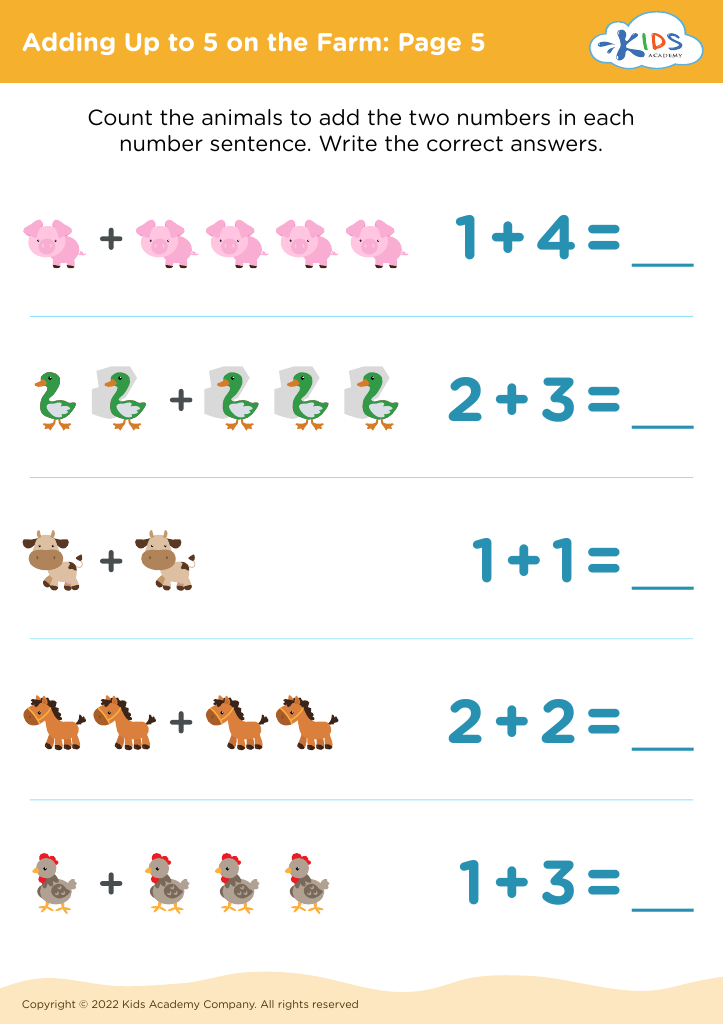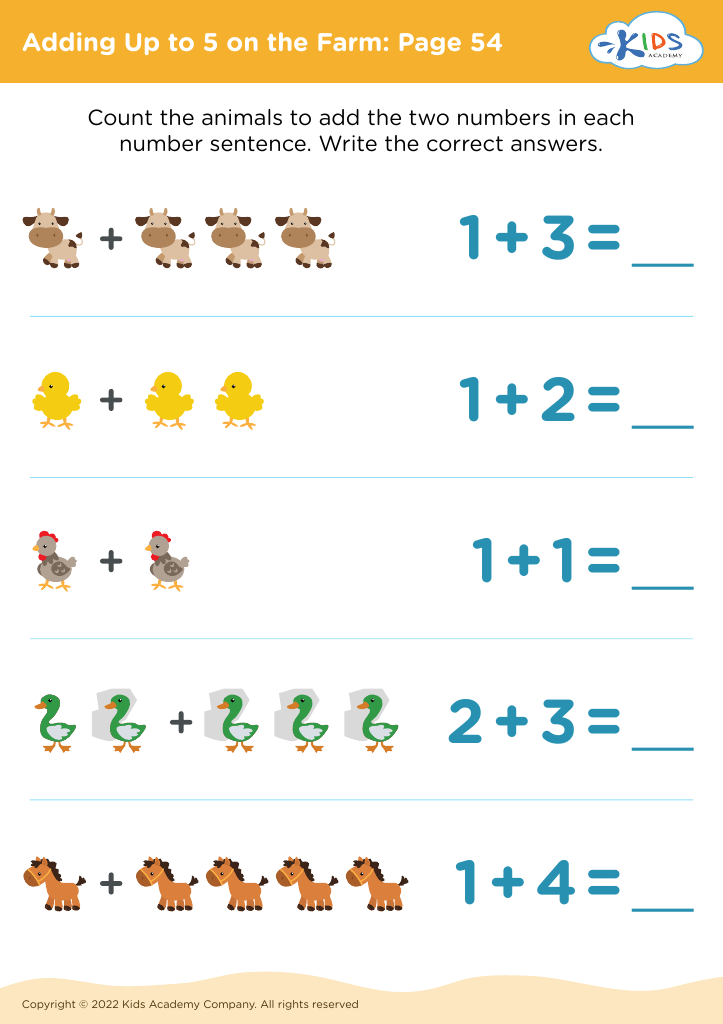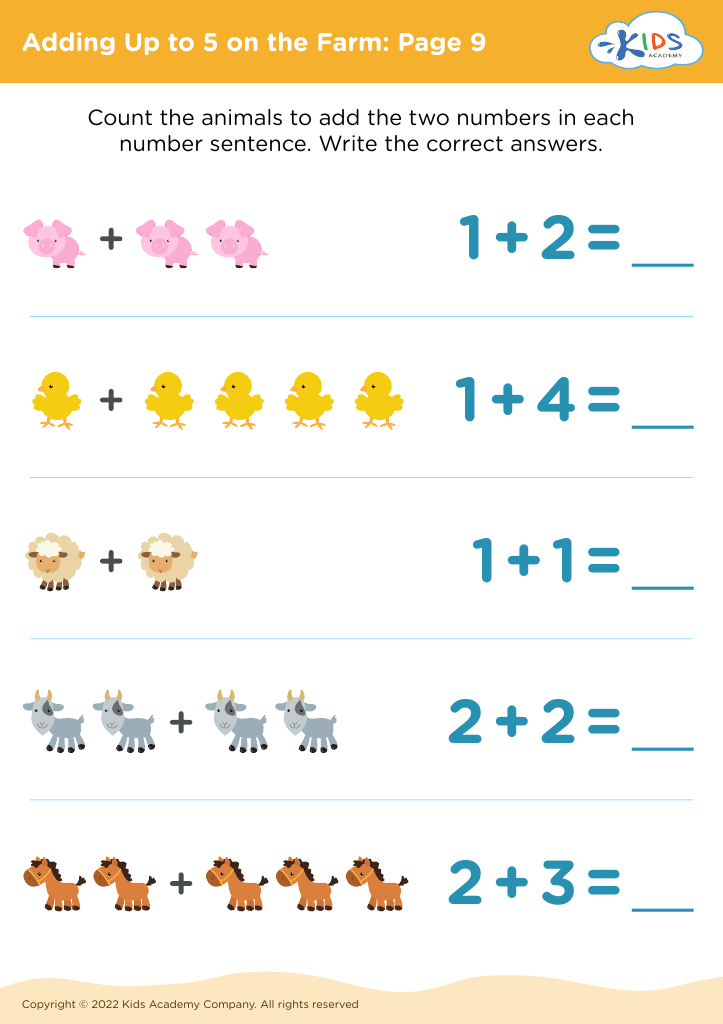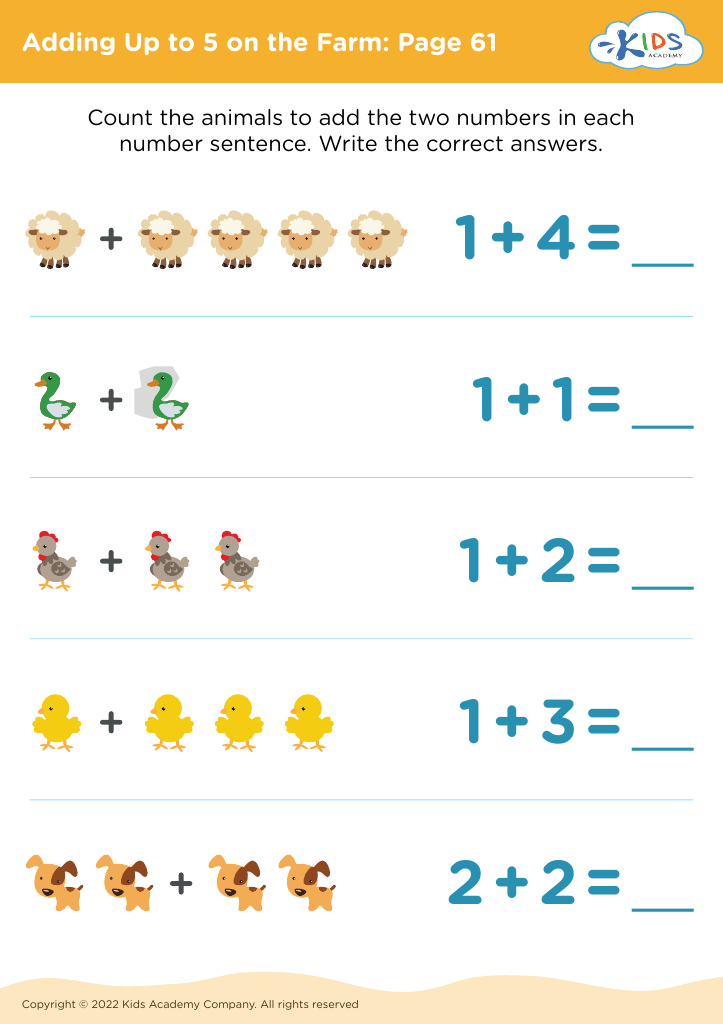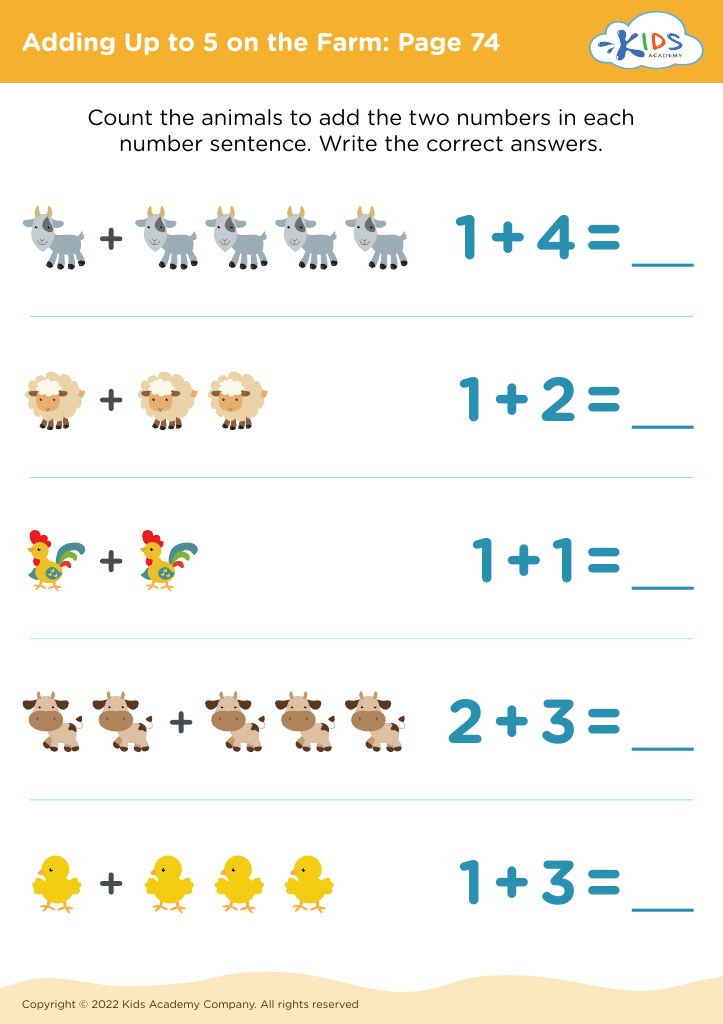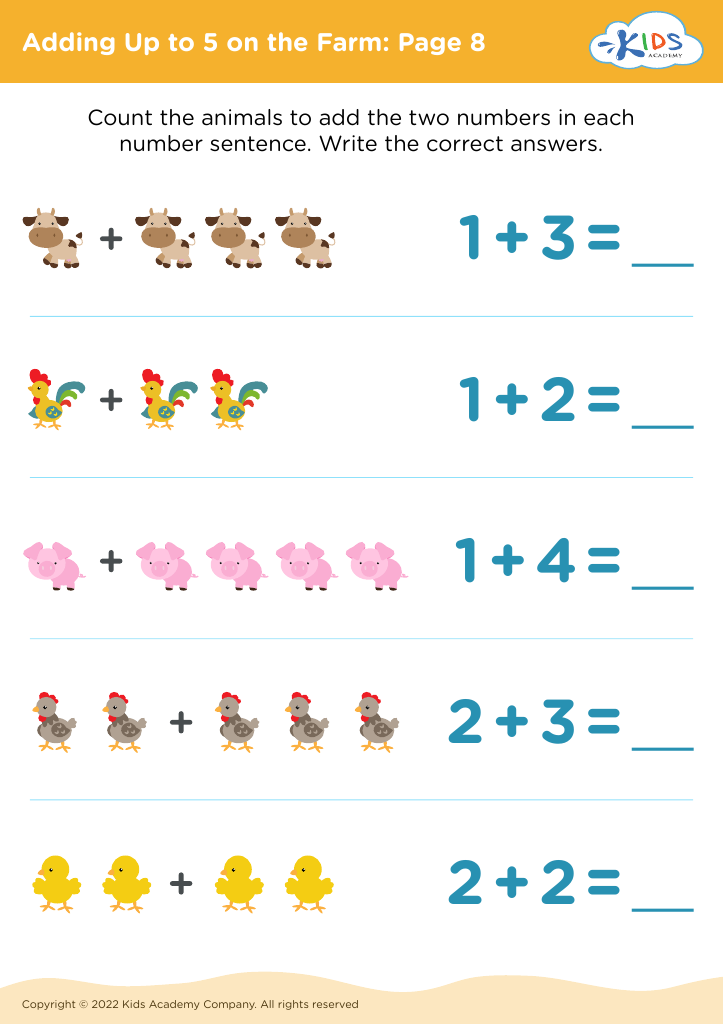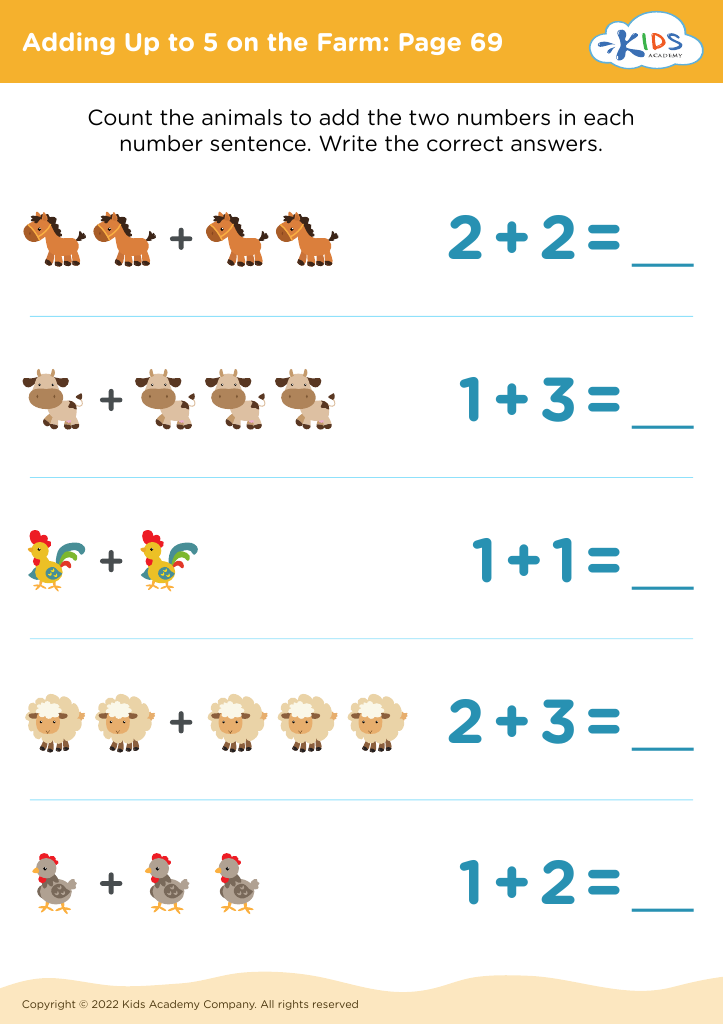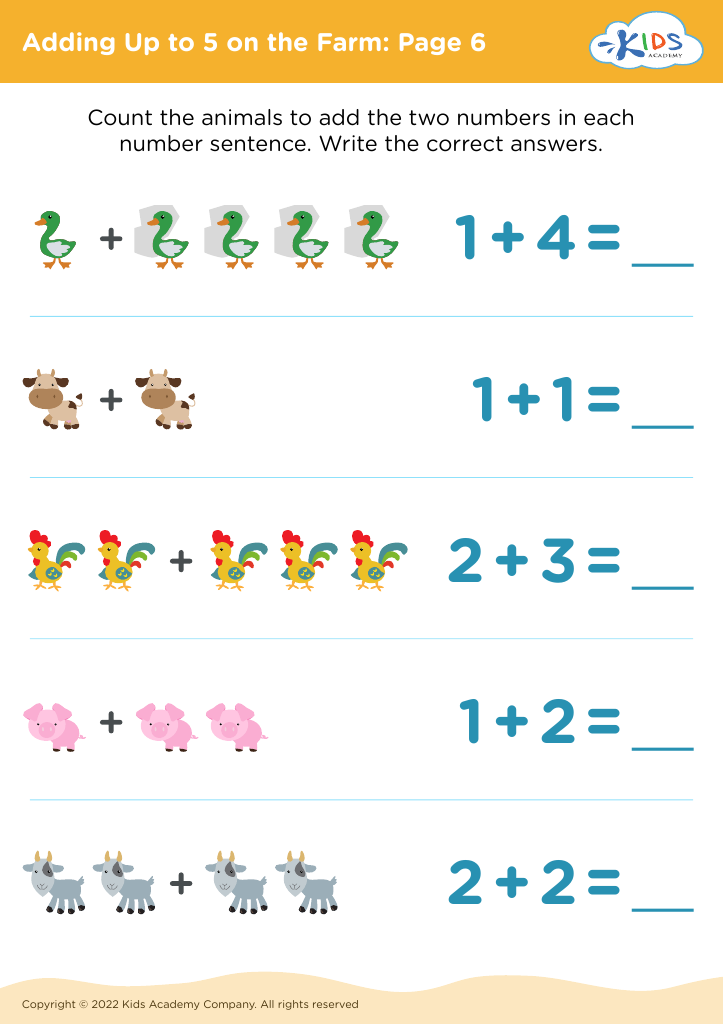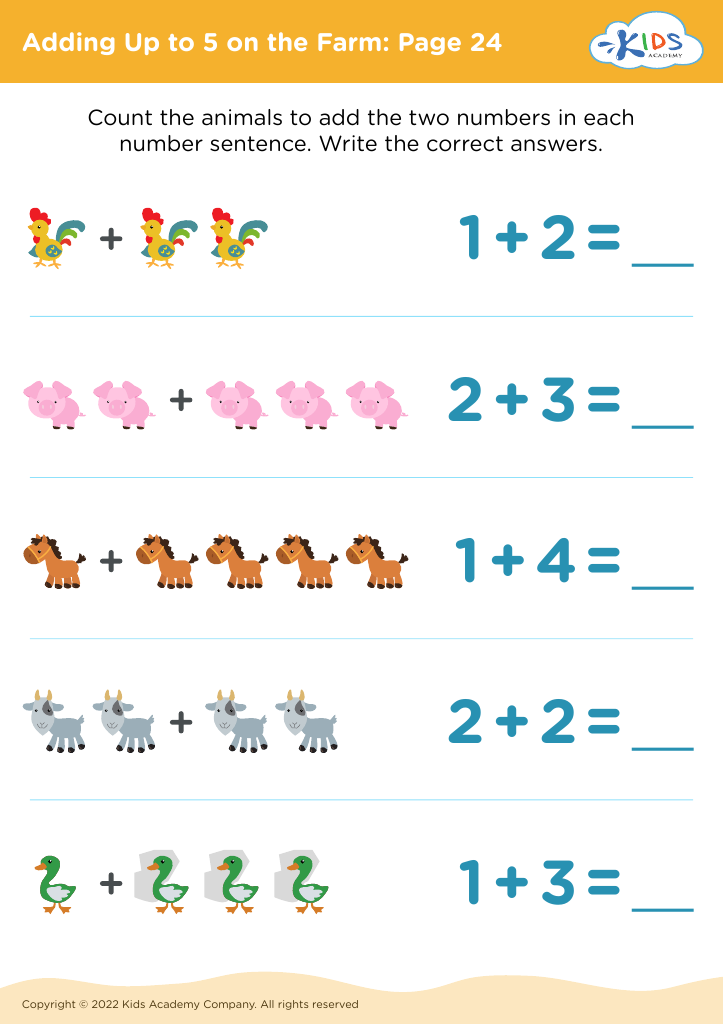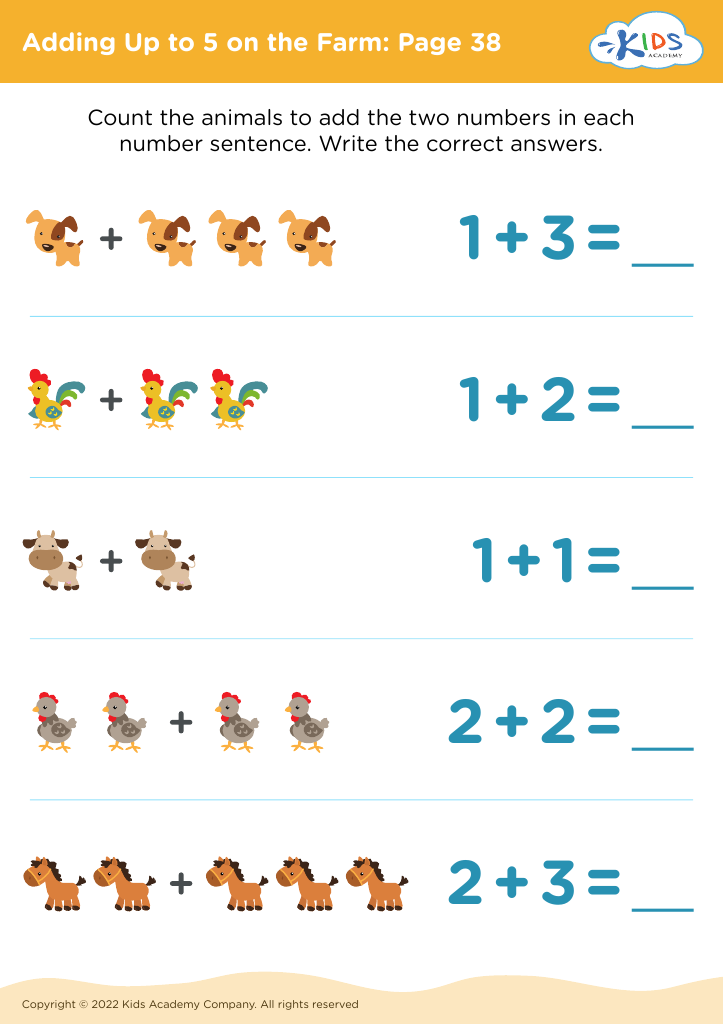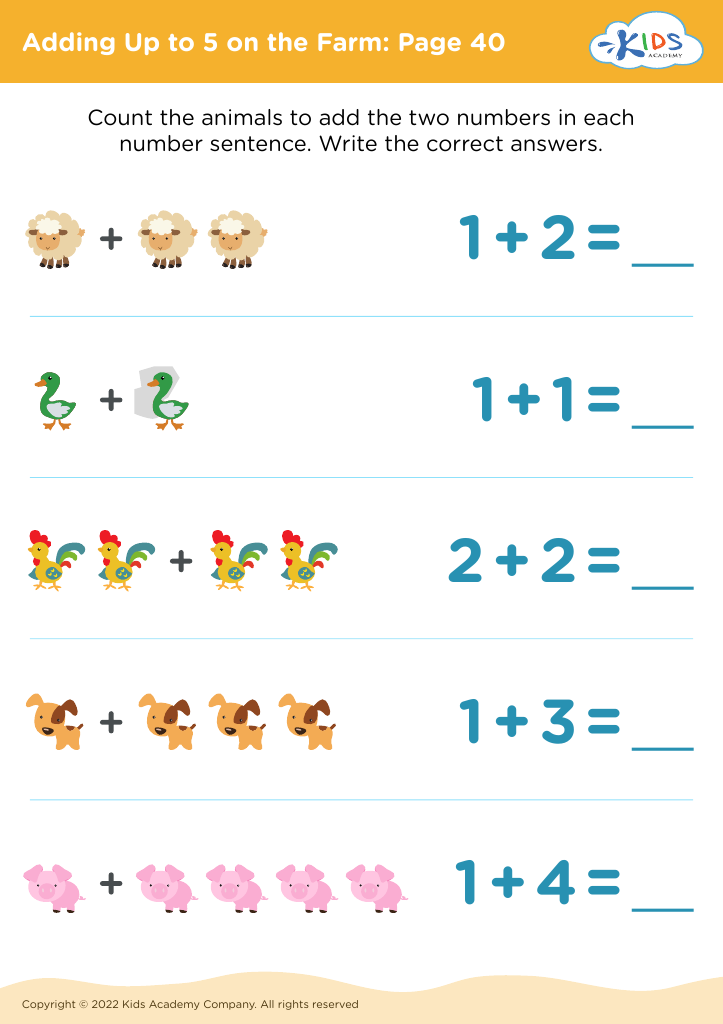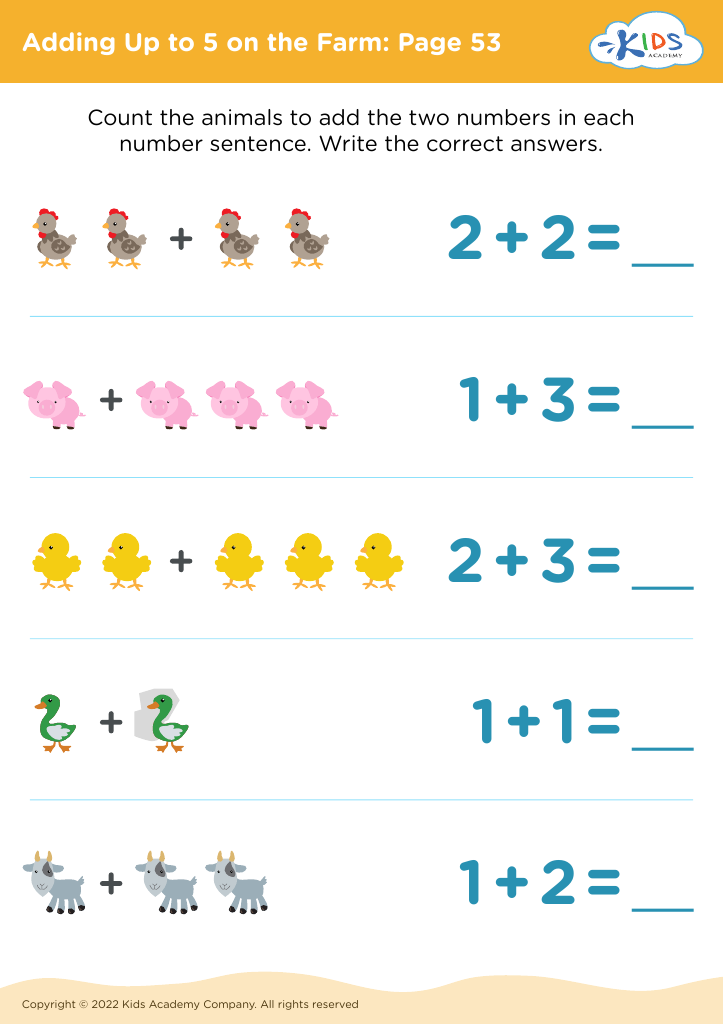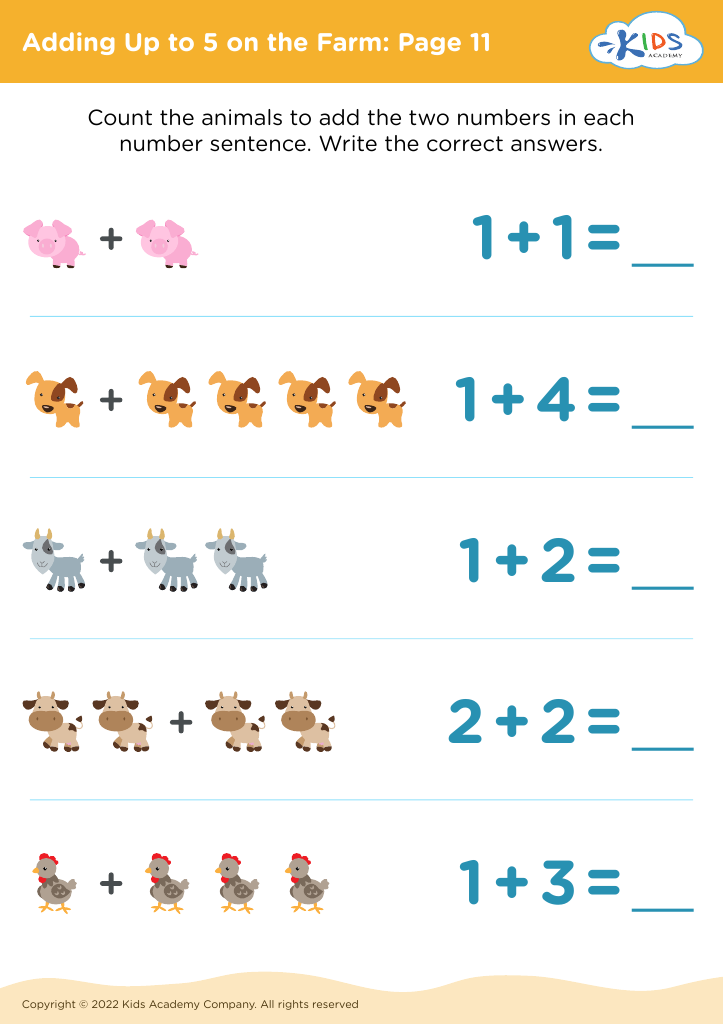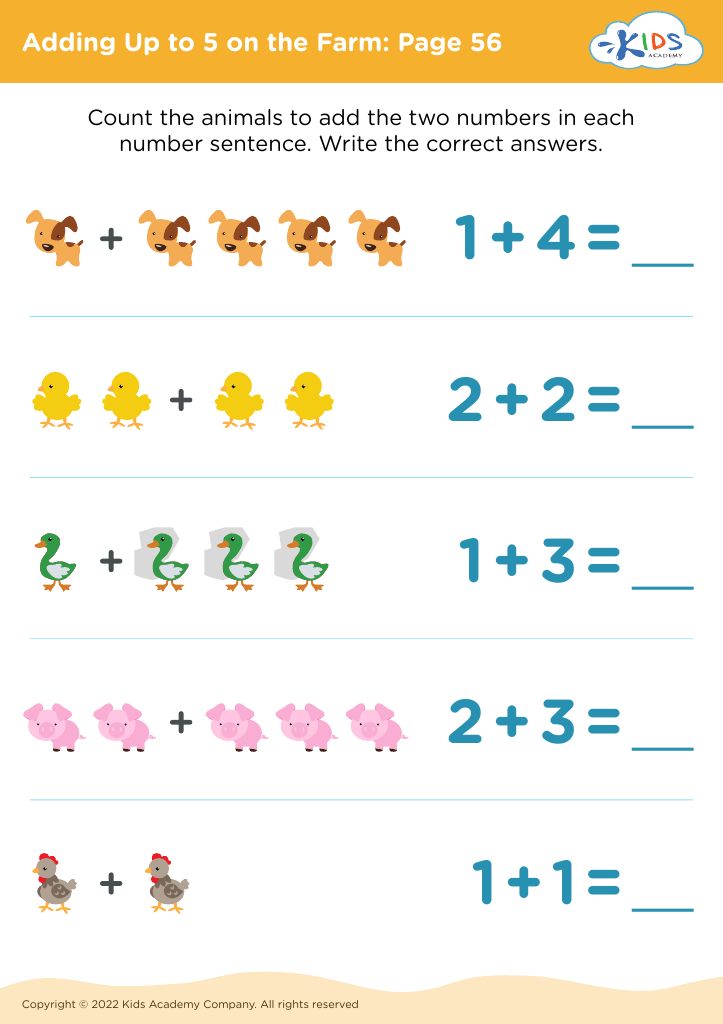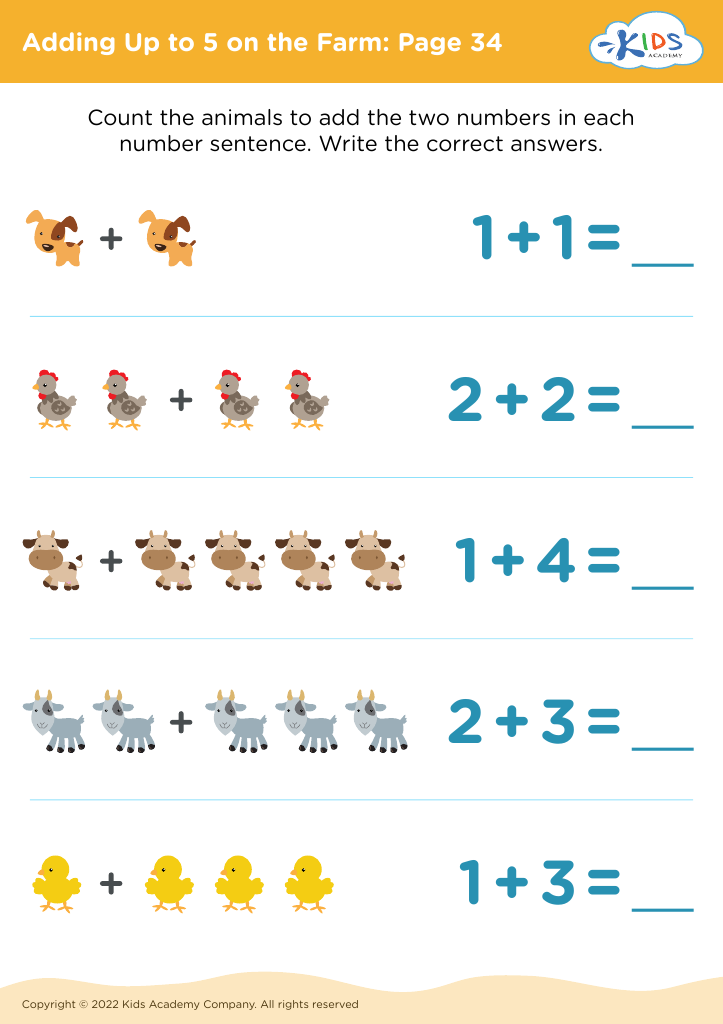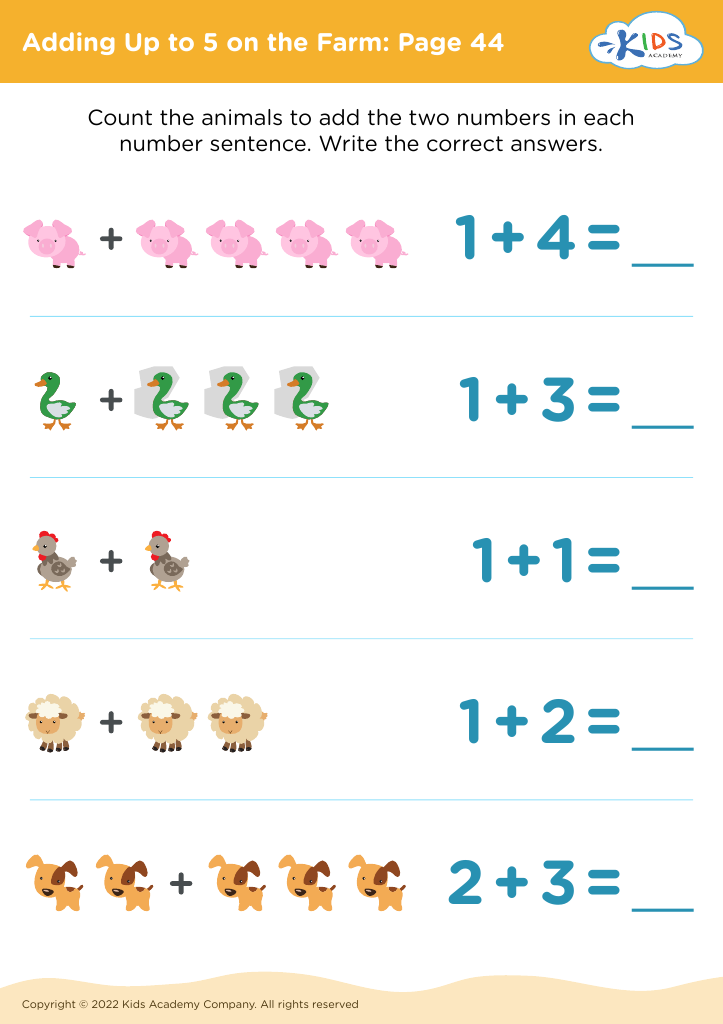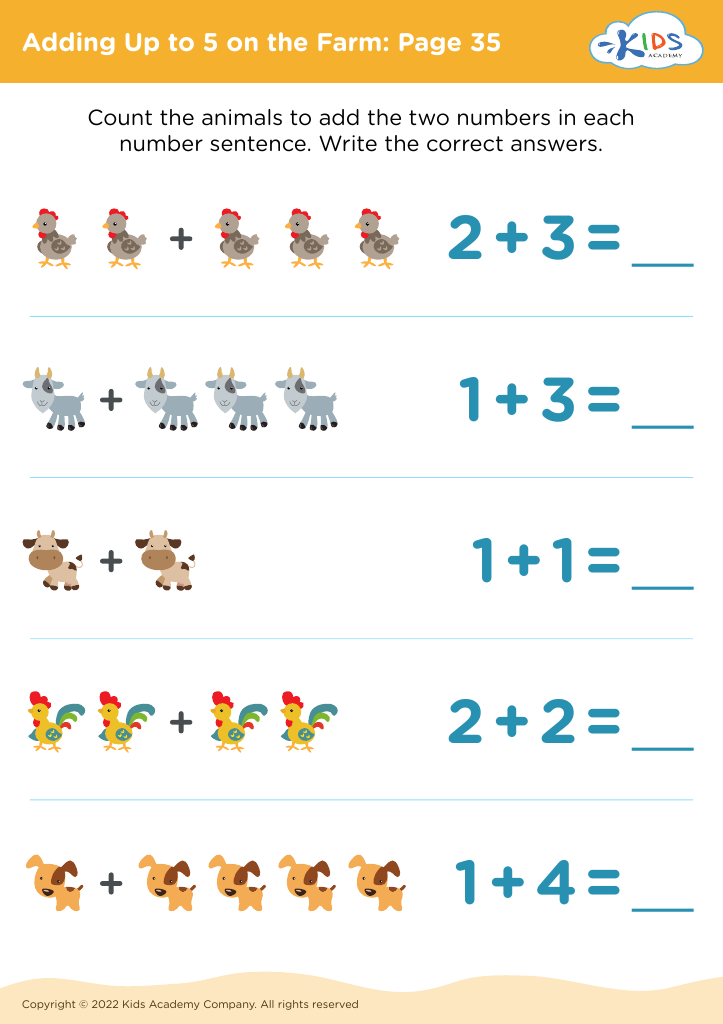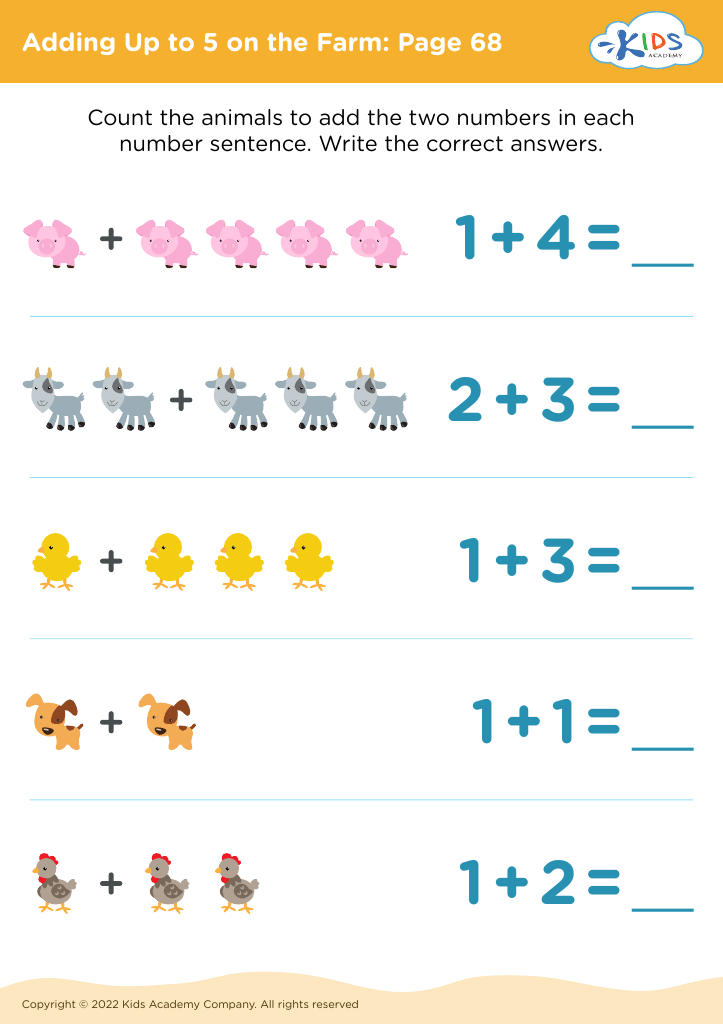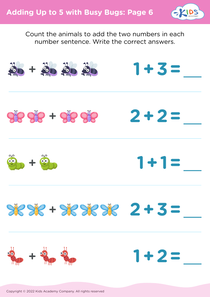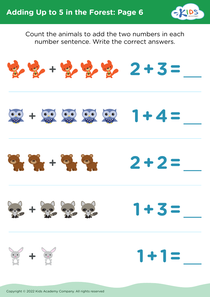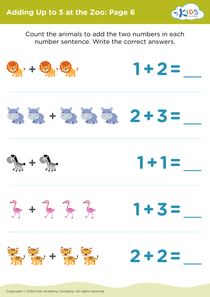Adding on the Farm Worksheets for Ages 5-7
77 filtered results
-
From - To
Discover the joy of learning with our "Adding on the Farm Worksheets" designed specifically for children aged 5-7! These fun and engaging worksheets help young learners develop essential math skills through delightful farm-themed activities. Each worksheet incorporates vibrant visuals of animals and farm life, making the addition process enjoyable and relatable. Perfect for homeschool settings or supplemental schoolwork, these resources encourage children to practice simple addition while igniting their creativity. Strengthen your child’s math foundation with interactive exercises that promote both learning and fun. Download our "Adding on the Farm Worksheets" today and watch your child's confidence in math soar!
"Adding on the Farm" is an engaging mathematical resource that captures the attention of children aged 5-7, making it essential for both parents and teachers. This interactive approach integrates foundational math skills with a relatable and enjoyable farm setting, helping kids grasp addition in a fun way. Understanding basic addition lays the groundwork for all future math learning, and farm-related themes can capture children's imagination, making learning memorable and enjoyable.
For parents, participating in activities like these fosters a positive learning environment at home. It helps them bond with their children while reinforcing essential skills that support their academic success. By engaging in these activities, parents encourage curiosity, creativity, and confidence in their child’s abilities.
Teachers, on the other hand, can use "Adding on the Farm" as an effective tool to diversify their teaching strategies. It enables differentiation, as students with varying abilities can explore addition at their own pace within a cohesive theme. This aids in improving students' overall engagement and comprehension.
Ultimately, "Adding on the Farm" nurtures critical thinking and problem-solving skills in young learners, creating a solid foundation for their mathematical journey, making it vital for both teachers and parents to prioritize such learning experiences.
